How to use neem oil on plants to get rid of pests naturally
Learn how to use neem oil on plants for a natural and effective pesticide, which won't cause harm to humans, birds and other animals
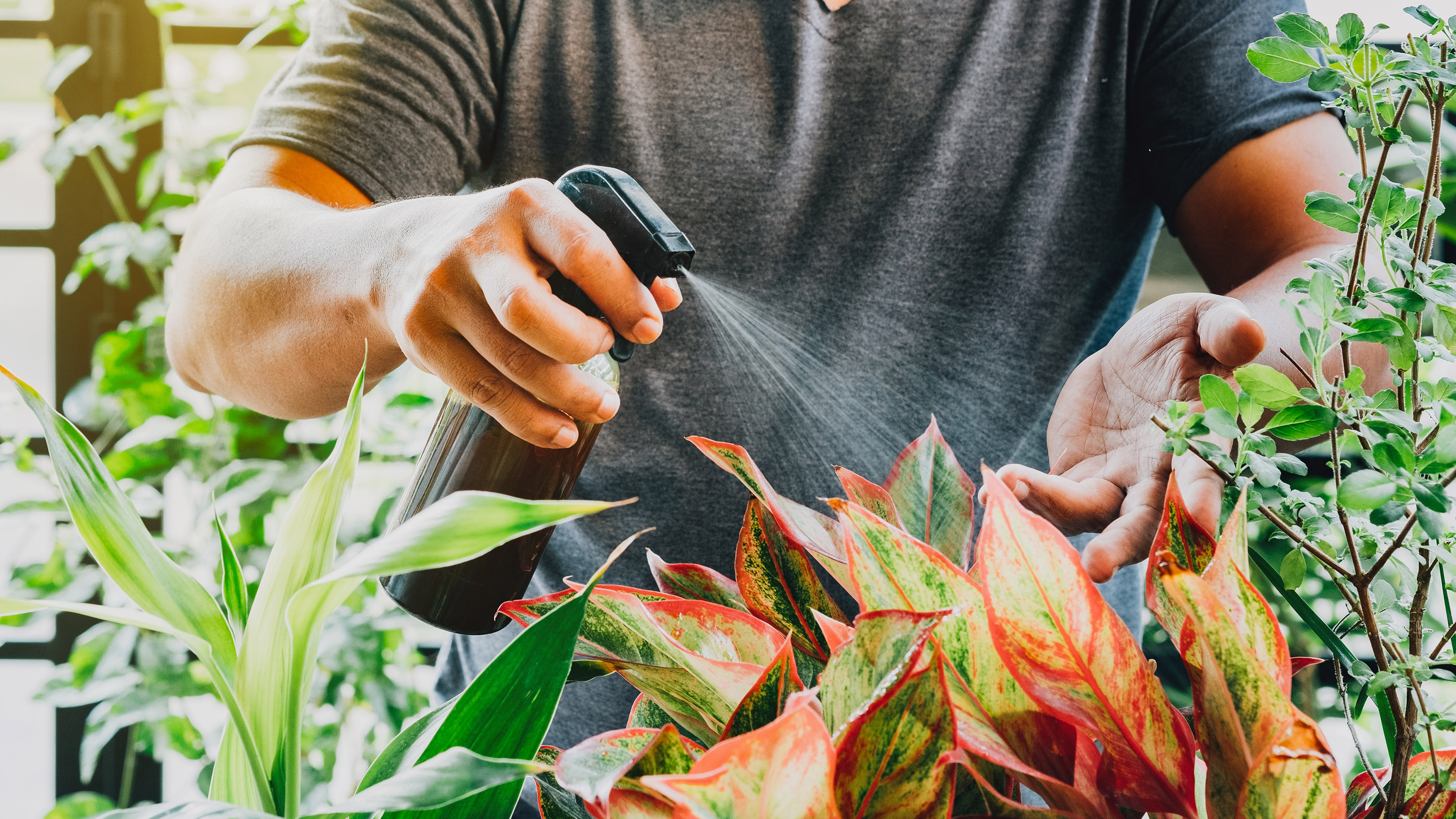

Dealing with garden pests is frustrating, but learning how to use neem oil on plants might ease your stresses somewhat, particularly if you prefer to target pests in an environmentally friendly way.
Whatever type of gardener you are, it’s hard not to feel disappointed when you find bugs wreaking havoc among your dahlias and tomatoes. But many gardeners claim that neem oil, often found in skincare products to treat acne and eczema rashes, makes a fantastic natural insecticide for garden plants.
The neem tree (Azadirachta indica) is part of the mahogany family and is native to tropical areas of India and Africa. All parts of the neem tree contain an oily substance, which helps the tree defend itself against attack from insects and grazing animals.
The oil is most concentrated in the seeds, and has been used in India for centuries, by gardeners and farmers watering plants with a neem oil solution, to control plant insects and diseases.
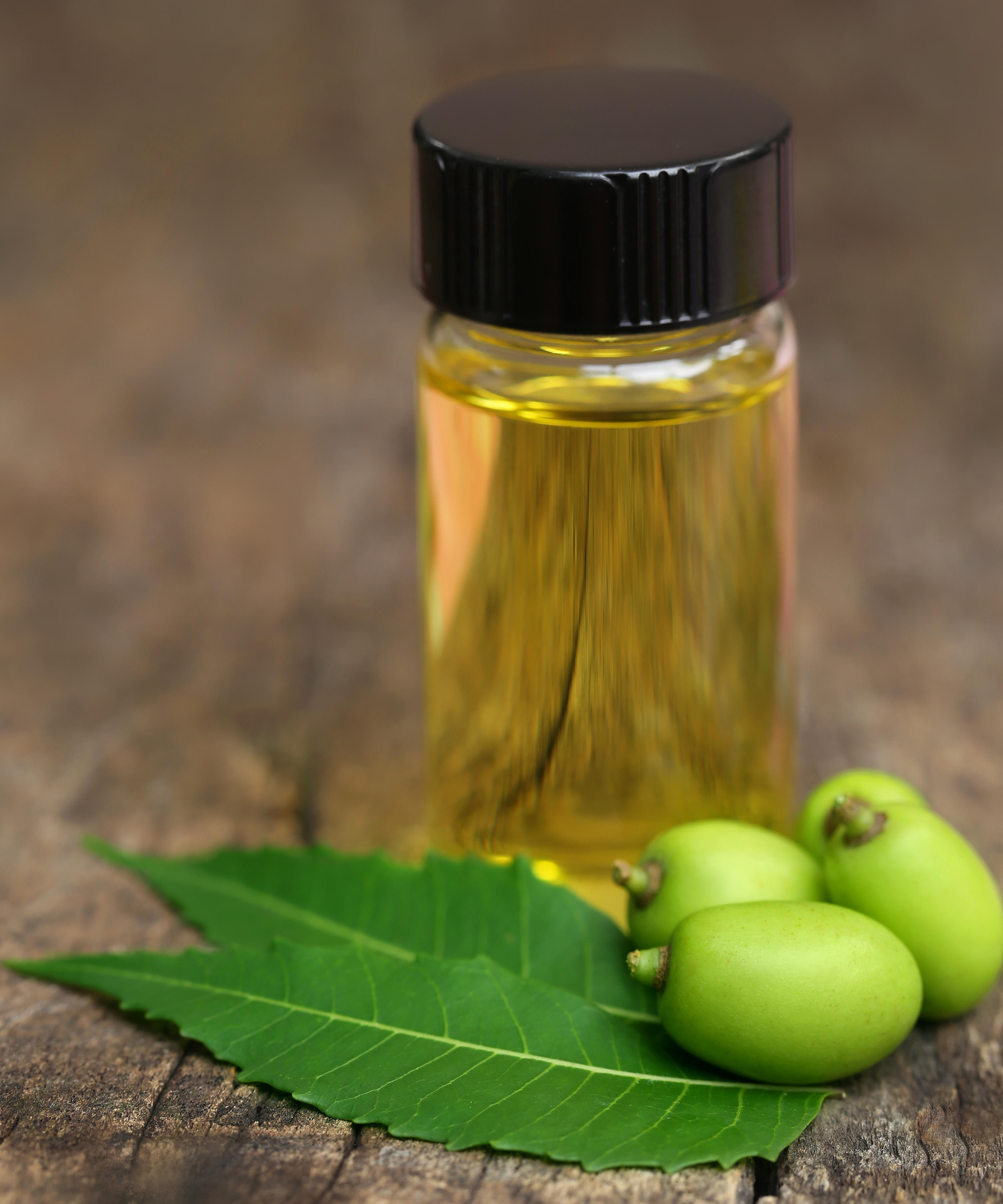
You'll need around 1 fluid ounce of neem oil per gallon of water
Learn how to use neem oil on plants in 5 easy steps
You will need:
- Cold-pressed neem oil, available from Amazon
- A gallon of water (4 litres)
- Mild dish soap (like Dawn or Ecover)
- Foliar pressure spray bottle, available from Amazon
- Mix a gallon of warm water with two teaspoons of soap. If you collect rainwater in a rain barrel you can use water from here that may have been warmed in the sun. The soap will act as an emulsifier for your mixture.
- Add one to two tablespoons (6 teaspoons) of pure neem oil to your mixture. One if you would rather err on the side of caution, two if you’re happy to give a stronger mix a go.
- Spray the foliage of plants thoroughly, paying attention to the underside of leaves, where pests tend to hide. A diluted neem oil spray can be used as a preventive measure on plants as well as control an existing pest attack.
- You can use neem oil mixed with water as a soil drench. When applied, the soil the plant takes up the mixture through its roots, and will be transported throughout the plant, which will have an impact on any feeding insects.
- Neem oil will take two or three days to kill bugs and will remain effective on plants for up to a week before it needs to be reapplied. For moderate pest infestations, apply a neem oil mix once a week for 3-4 weeks.
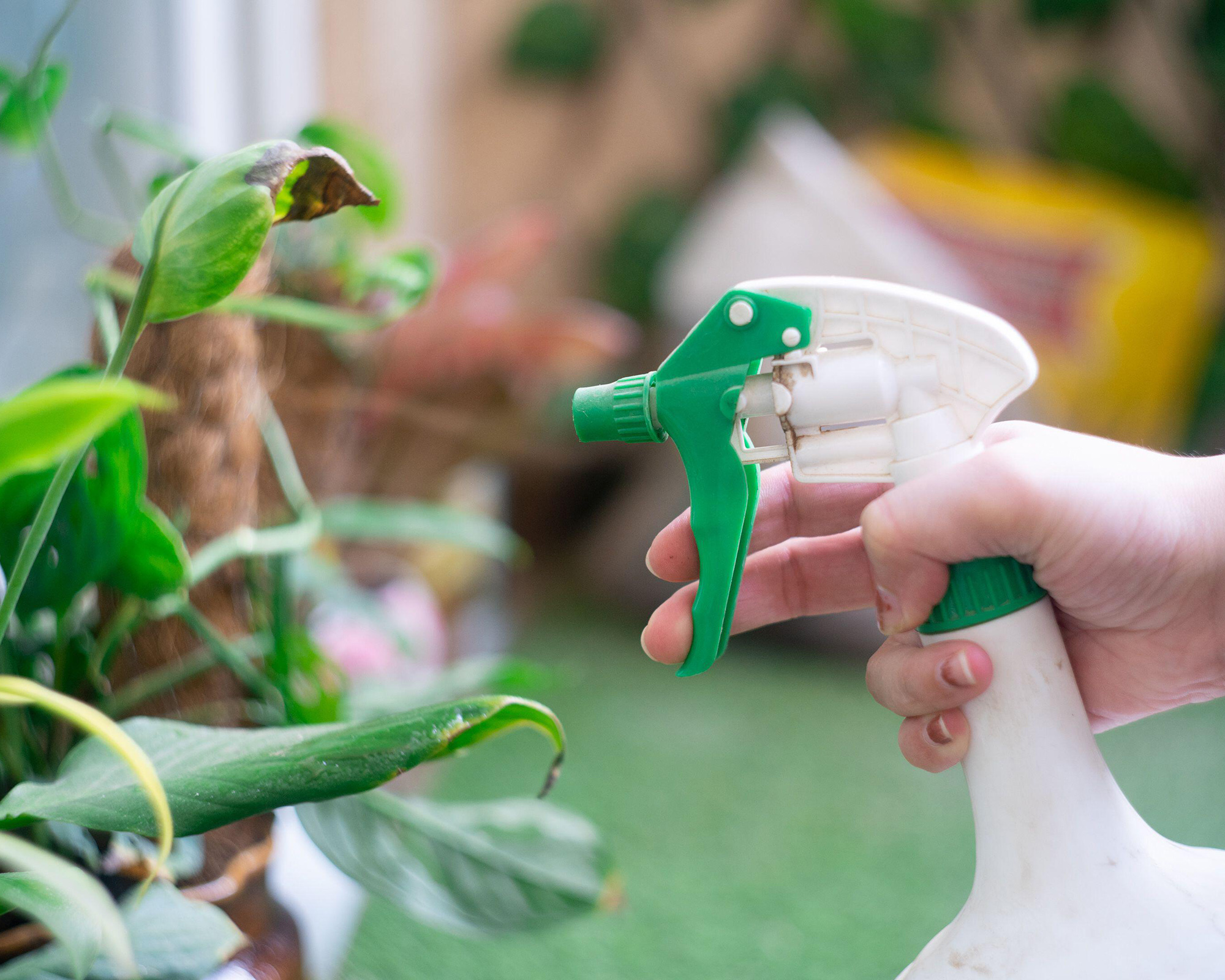
Neem oil can be used on indoor plants too
Tips for using neem oil correctly on your plants
- Think about the best time to water plants with your neem oil solution. Avoid using neem oil in the middle of the day, as the combination of neem oil and hot sun can burn the leaves on plants.
- If you're trying out neem oil on your plants for the first time, bear in mind neem oil can cause allergic reactions, such as contact dermatitis. So it’s sensible to wear gardening gloves when handling the oil.
- If you're wondering how to use neem oil on plants in your kitchen garden, ideally, harvest your produce before spraying plants with neem oil. This will allow enough time for the oil to kill any unwanted pests before the next harvest.
- Use the spray as soon as you’ve made it. Once mixed, the active ingredient – azadirachtin – will start to break down and lose its potency.
- Store your undiluted neem oil in a cool room indoors. It will remain effective for 1-3 years. If your neem oil has thickened or hardened due to the temperature being too cool, let it sit for a couple of hours at room temperature before you use it.
- Any oil or soft soap will damage soft-bodied insects across the board, including ladybird and hoverfly larvae and nymphs. Therefore, it’s best practice to spray neem oil in the early morning or evening, as this is when beneficial insects are least active, but plant-munching bugs are still feeding.
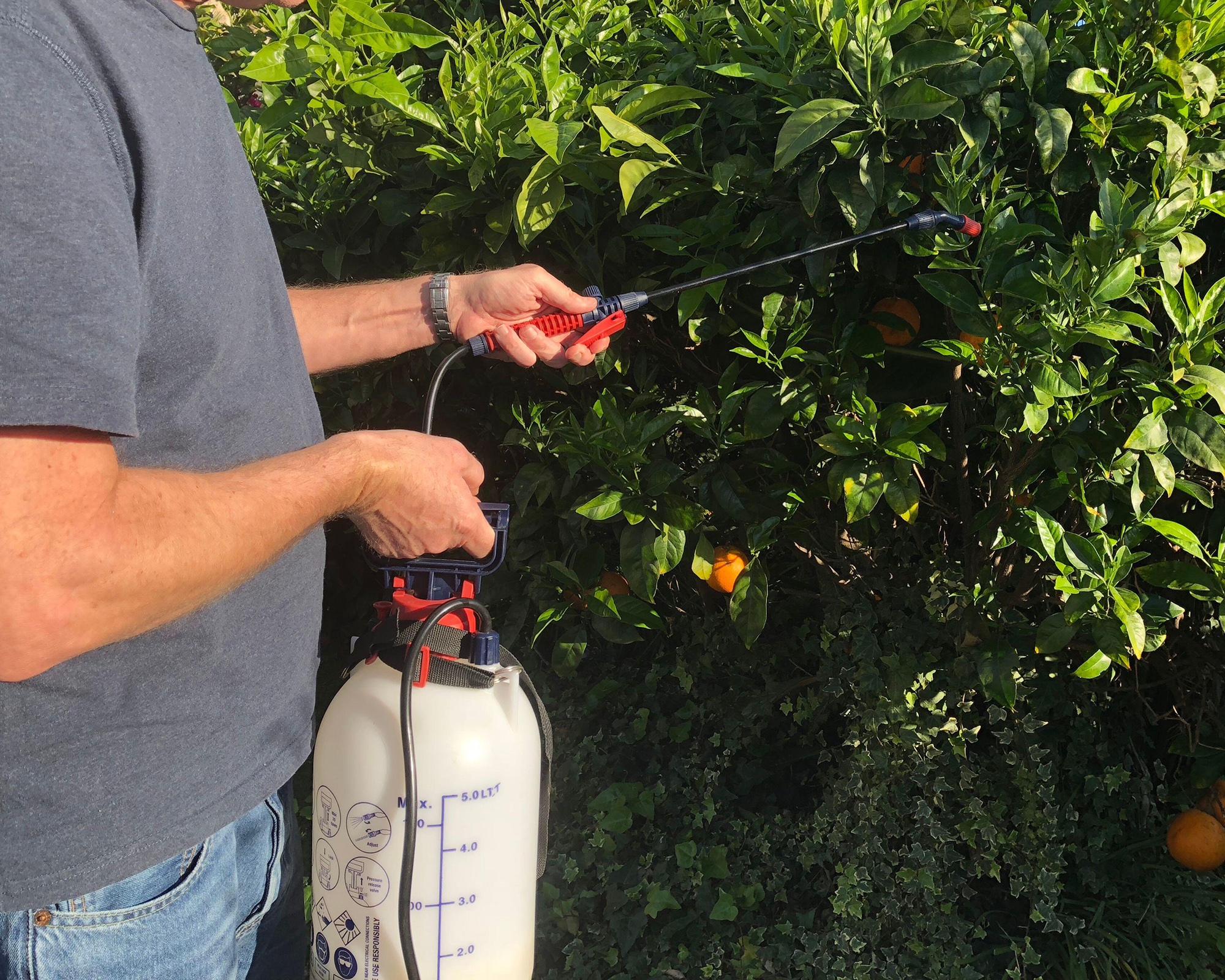
Use a pressure spray bottle for covering larger areas
What plants can I use neem oil on?
You can use neem oil on plants of many varieties, including indoor plants, fruits and vegetables. Some plants are a little sensitive to neem, which can cause scorch on the leaves – so avoid using it on herbs, spinach, lettuce, peas and kale.
Many insecticide manufacturers give a harvest crop interval time, which tells you how long you should wait to harvest the produce after spraying it. Neem oil doesn’t come with this information so it’s best to err on the side of caution and wait a week before picking produce to eat.
So if you're watering plants while away and want to use neem oil, this could give you plenty of time for it to work before you return from your vacation.
If at any point you need to pick crops less than a week after using the neem oil, just ensure you wash the produce thoroughly.
Ethne Clarke, contributing editor to Hartley Botanic USA says, 'I use neem oil throughout my garden, including on edibles, and have never had any adverse effects. I spray a diluted mix early in the season to get rid of aphids and cabbage worms. My garden is alive with all the desirable fauna I could wish for.'
You can buy ready-use neem plant mixture, however, it’s usually cheaper to make your own. Diluted mixtures are better for the environment – too high a concentrate can harm bees.

Spraying the soil directly allows the neem oil to be taken in by the plants' roots and impact any feeding insects
Is neem oil safe to use on plants and crops?
The active ingredient in neem oil, azadirachtin, acts as a repellent and reduces the insect’s ability to feed as well as grow and lay eggs. 'In contrast to pyrethrins (which work on contact with the insect), neem oil works by ingestion, so is somewhat safer to beneficial insects such as bees or ladybirds', says Dr Joanna Knowle, Senior Advisor at the Environmental Protection Agency, NZ.
In the environment, neem oil is washed off plants by rain and rapidly broken down. The United States Environmental Protection Agency (EPA) considers neem oil to be 'low toxicity' – ingesting trace elements is unlikely to cause any harm to humans, birds and animals.
However, it is toxic to fish and other aquatic animals so should not be directly disposed of in water or used on your pond plants. In the UK, the Soil Association say that neem oil is permitted for certified organic farmers to use.
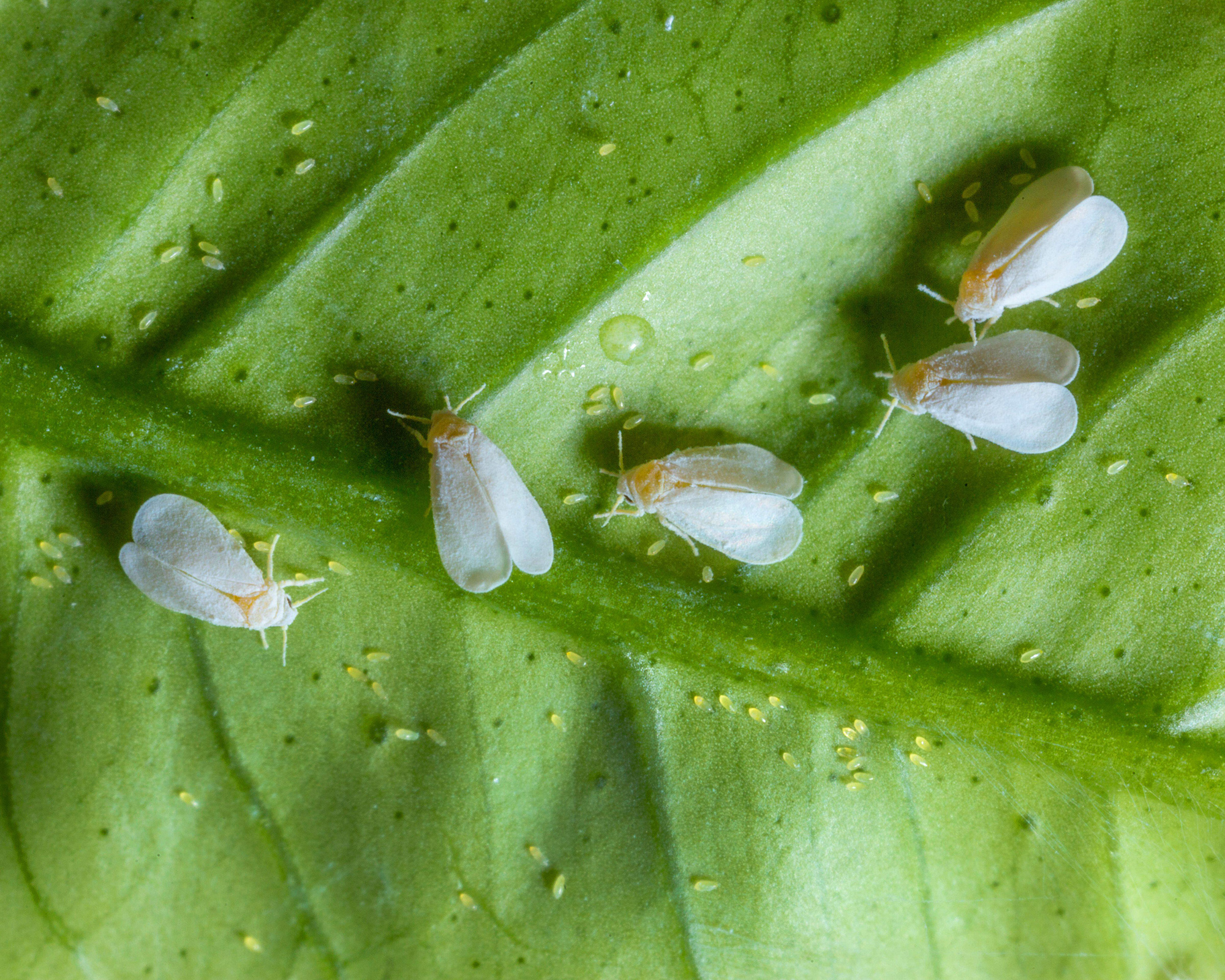
Whitefly is one of many pests which can be treated with neem oil
What bugs does neem oil control?
The range of plant-eating insects and pests that neem oil can control is one of the huge benefits of learning how to use neem oil on plants. It can get rid of aphids, and control whitefly, mealy bugs, spider mite, cabbage white butterflies, leaf miners, snails, slugs, gnats and thrips.
It can kill these soft-bodied pests at any stage of their lifecycle, although it’s always best to catch pest infestations early before they take hold. Neem oil can also control fungal diseases like powdery mildew, black spot and scab.

Working at a garden center when she was 23, Sally realised straight away the therapeutic power of being around greenery and nurturing plants. She's horticulturally trained to degree level and has worked on gardening magazines for over a decade. Sally now gardens in Bournemouth, UK, zone 8a (H5).
